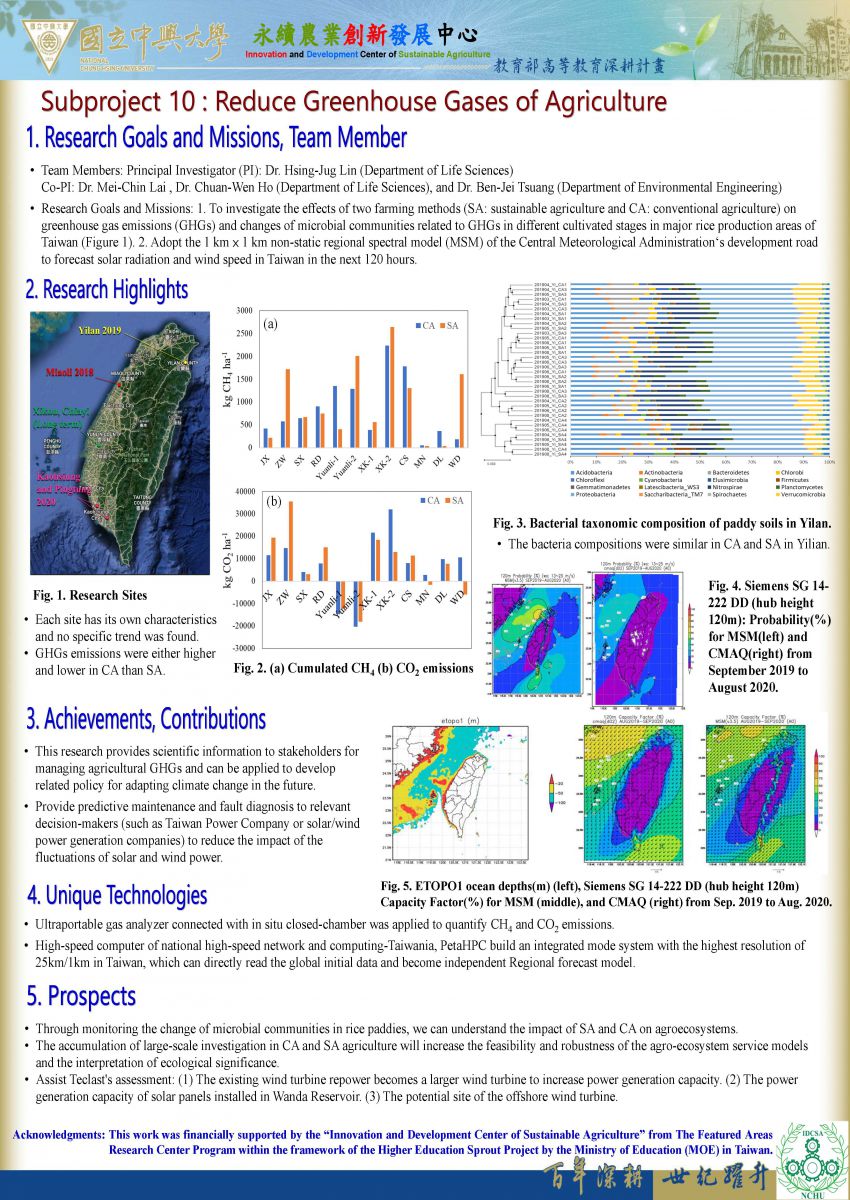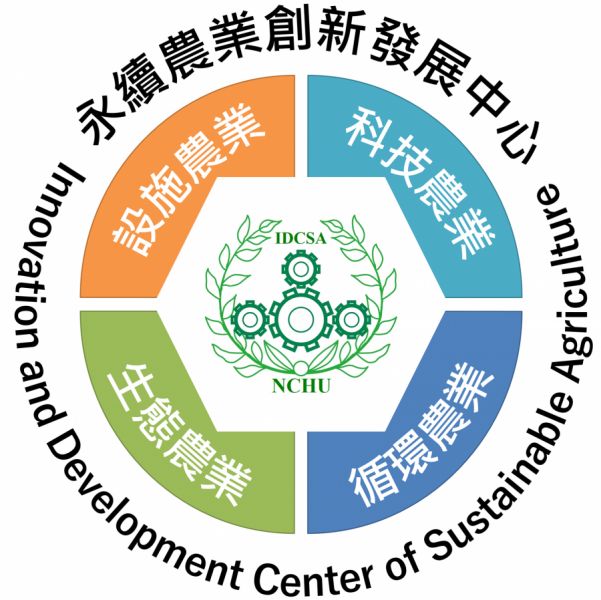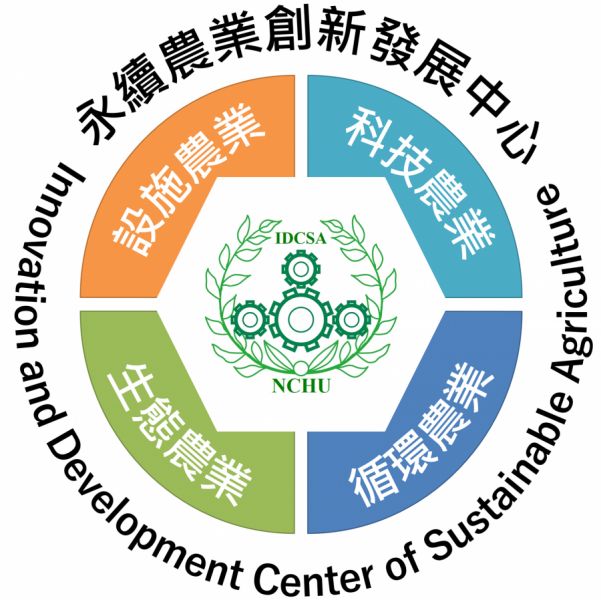This subproject completed the in situ monitoring for greenhouse gas emissions from rice paddy fields under the conventional (CA) and sustainable agricultural (SA) methods in the second season of 2019 in Xikuo, and the first season of 2020 in Xikuo, Kaohsiung, and Pintung. The results indicated that CH4 emissions under CA were similar with SA in Xikou during monitoring period. In addition, CH4 emissions were higher in the second seasons than the first seasons. The cumulated CO2 flux from CA were higher than in Xikou during most of the times which suggested that SA might be able to reduce GHG emissions. To mitigate the GHG emissions from the rice paddies, it is recommended that to cultivate rice only in the 1st seasons if the rice supply is sufficient. In Kaohsiung and Pintung, the greenhouse gas emissions are only measured in one growing season, so it is difficult to compare the differences of greenhouse gas flux between CA and SA. The results also indicate that CH4 and CO2 emissions were lower in subtropical regions (e.g., Yilan and Miaoli) than in tropical regions (e.g., Chiayi, Kaohsiung, and Pingtung). According to previous studies, the CH4 and CO2 emissions in Taiwan were comparable with to other countries. Soil water content was negatively correlated with CO2 emission but positively correlated with CH4 emission, indicating that water is an important factor which regulates GHG emissions in rice paddy soils.
Microbes are known to play the important role of the methane and nitrous oxide cycling, the main players are methanogenic archaea, methane/ammonia oxidation archaea and bacteria and denitrifying bacteria. The aim of this project is to investigate the effects of different farming methods and tillage periods on the changes of microbial communities and functional genes related to the greenhouse gas cycling. The microbe compositions in experimental soils will be analyzed by the 16S rRNA gene amplicon next generation sequencing. Furthermore, combination of the changes of microbial communities, gas emissions and soil geophysical and chemical factors in rice paddies can provide the scientific basis for agroecosystems in Taiwan for the promotion of sustainable agriculture in the future.
High resolution weather model (High resolution non-hydrostatic mesoscale spectral model, MSM) was modified to improve the ability of weather forecasting and reduce the cost of agriculture planting. At the same time, four high-mountain tea farms were chosen as experimental field to compare the observed data and model data. Moreover, we also developing a broad casting software (ex. Line app.) in order to immediately covey the forecasting result to the farmers. Finally, we hope this kind of technique not only used in agriculture, but also apply in other weather-sensitive business.
This research provides scientific information to stakeholders for managing agricultural greenhouse gases and can be applied to develop related policy for adapting climate change in the future in Taiwan.

Figure. Research Acheivements(Subproject 10)
Figure. The ETOPO1 ocean depths(m) (left) and Siemens SG 14-222 DD (hub height 120m) Capacity Factor(%) for MSM (middle) and CMAQ (right) from September 2019 to August 2020




